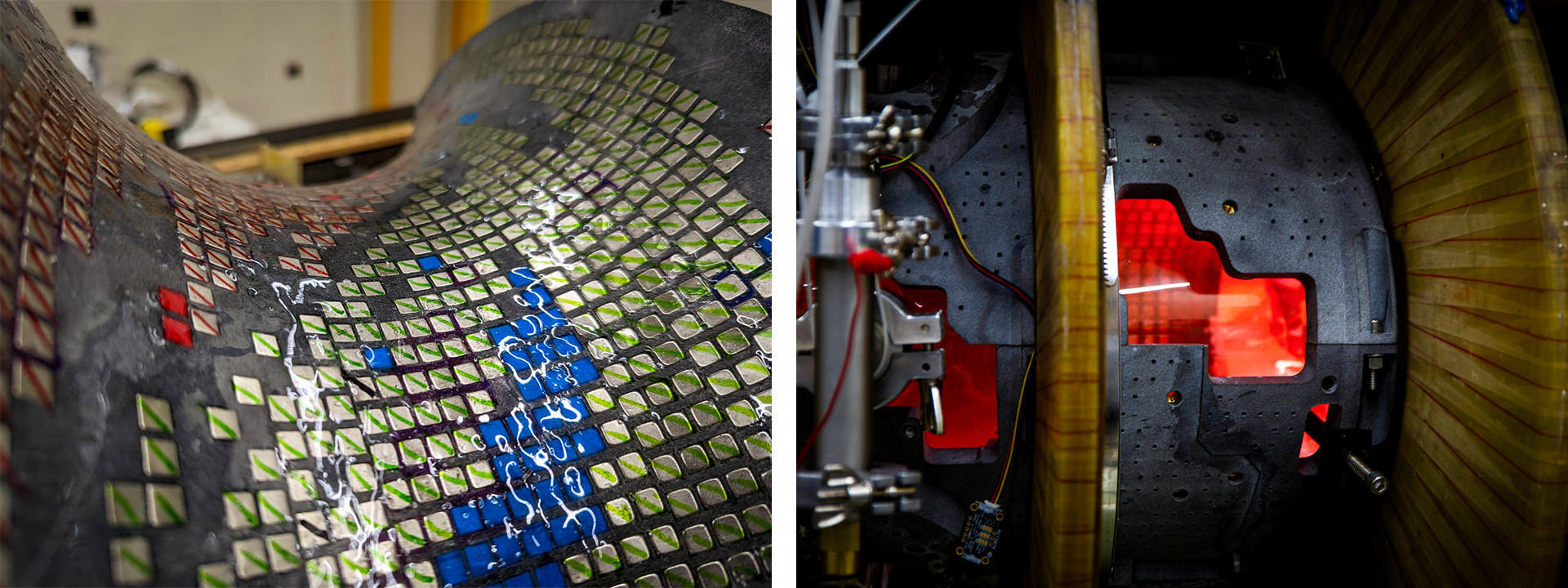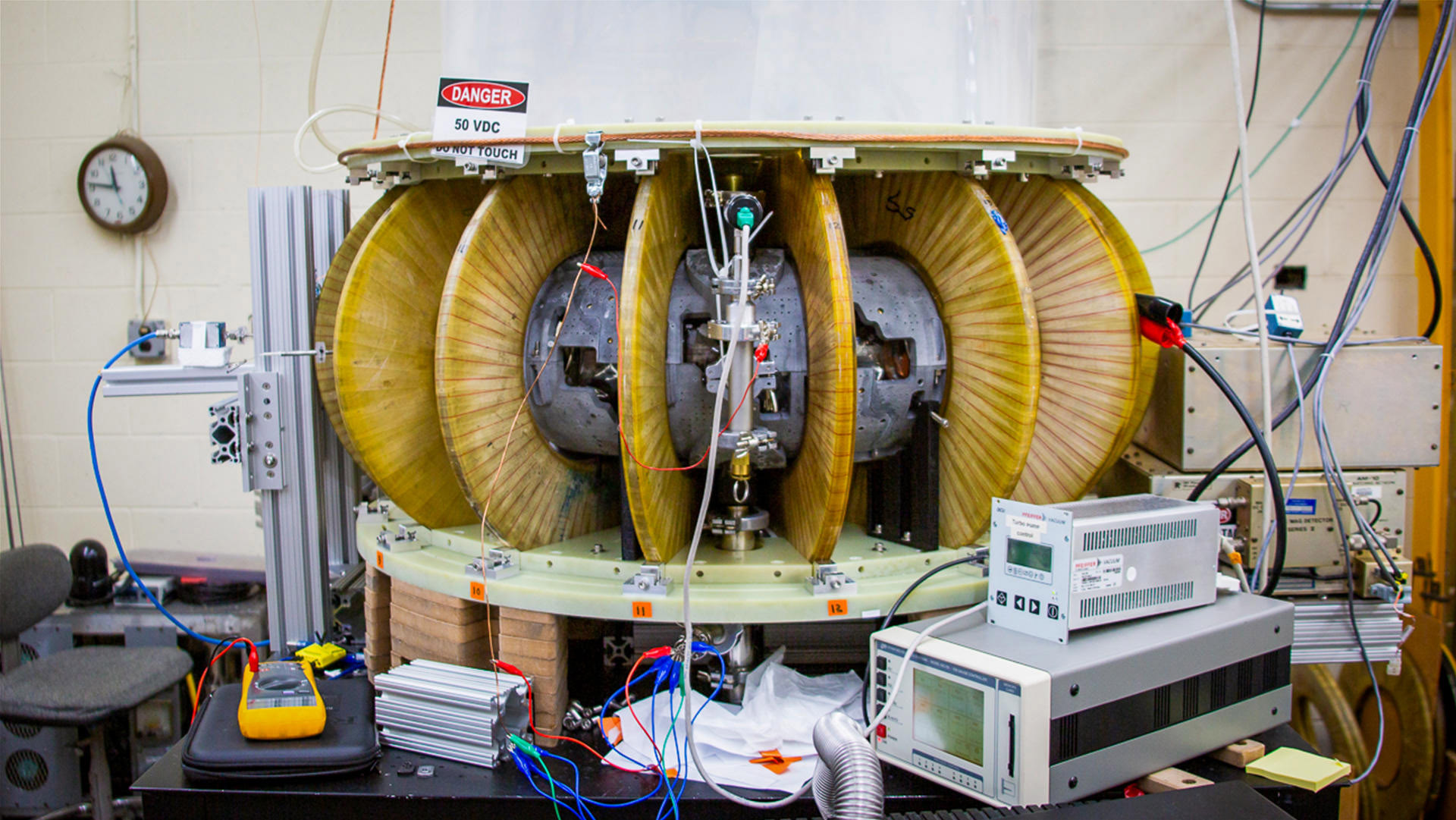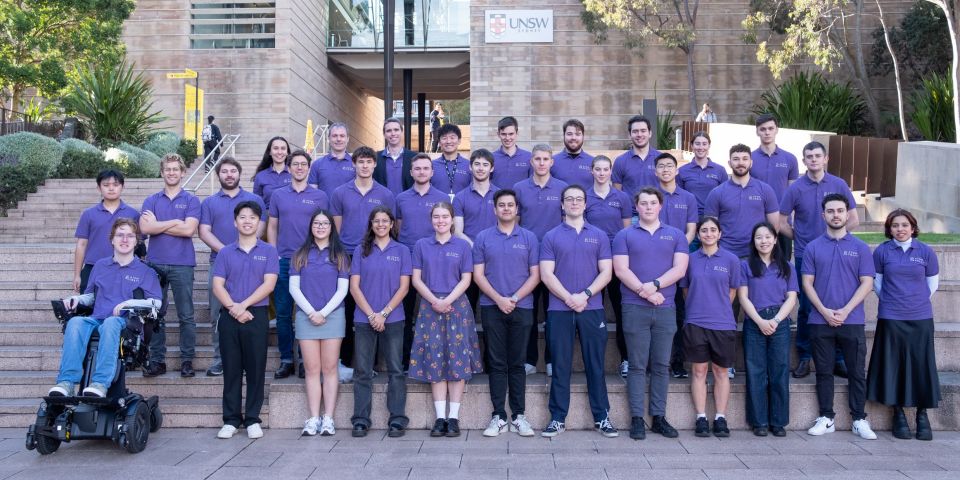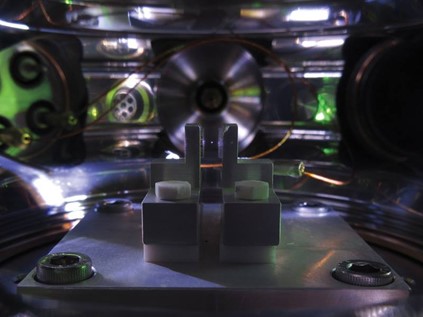Off the shelf: PPPL described MUSE, its construction, and purpose in a recent article. “Using permanent magnets is a completely new way to design stellarators,” said Tony Qian, a graduate student in the Princeton Program in Plasma Physics. “This technique allows us to test new plasma confinement ideas quickly and build new devices easily.” Qian is the lead author of papers published in the Journal of Plasma Physics and Nuclear Fusion on the theory and engineering of the device.
Stellarators typically rely on electromagnets with complex shapes that must be manufactured and installed precisely. Not only do permanent magnets not need electric currents to create their fields—they can also be ordered off-the-shelf from industrial suppliers. The PPPL team embedded purchased magnets in a 3D-printed shell around the device’s vacuum vessel.

Some of the permanent magnets that make MUSE’s innovative concept possible (left). A close-up of MUSE's 3D-printed shell (right). (Photos: Xu Chu/PPPL and Michael Livingston/PPPL)
“MUSE is largely constructed with commercially available parts,” said Michael Zarnstorff, a senior research physicist at PPPL. “By working with 3D-printing companies and magnet suppliers, we can shop around and buy the precision we need instead of making it ourselves.”
The concept: Zarnstorff had the idea that permanent magnets could be used to build a stellarator more cheaply in 2014. “I realized that even if they were situated alongside other magnets, rare-earth permanent magnets could generate and maintain the magnetic fields necessary to confine the plasma so fusion reactions can occur,” Zarnstorff said, “and that’s the property that makes this technique work.”
Stellarators have an advantage over tokamaks, because they can operate without running electric currents through the plasma, which causes instabilities in conventional tokamaks. But stellarators have their own drawback—the precisely twisted components are tricky to make and assemble and thus far have seemed too complex for an economical power plant. Zarnstorff thought permanent magnets could help.
The key is quasisymmetry: According to PPPL, MUSE has greater quasisymmetry than any other stellarator has shown. In fact, it has quasiaxisymmetry—while the physical shape of the magnetic field inside the stellarator may not be symmetrical, a magnetic field has quasisymmetry, leading to good plasma confinement, if its strength is uniform all the way around the device. “MUSE’s quasisymmetry optimization is at least 100 times better than any existing stellarator,” Zarnstorff said.
The PPPL team plans to investigate MUSE’s quasisymmetry by mapping the magnetic fields more precisely and measuring how the spinning plasma slows down.
A permanent path to power? Thea Energy, formerly known as Princeton Stellarators Inc., was spun out from PPPL in 2022. The company’s stellarator concept does not use permanent magnets, but it does use an array of flat, planar magnet coils around the torus like those seen in MUSE, rather than the twisting, 3D coils used for other stellarators. An electronic control system can vary the magnetic field in the coils to achieve a stellarator plasma.
Thea Energy was chosen by the DOE in May 2023 (when it was still known as Princeton Stellarators) as one of eight fusion developers in the Milestone-Based Fusion Development Program to receive funding to develop a fusion pilot plant design. Two stellarator developers were selected; Type One Energy was the other.
David Gates, who worked at PPPL for more than 25 years, is Thea’s chief technology officer. A June 2 article published by PPPL celebrating the award, quoted Gates as saying, “We’ve reinvented the stellarator with no more wiggly coils. The basic idea is that we can replace twisting coils with flat coils with varied current in them. So, we’ve taken the complexity out of the coils and put it into the control system.” He added, “It’s inspired by the permanent magnet idea that we were working on.”












